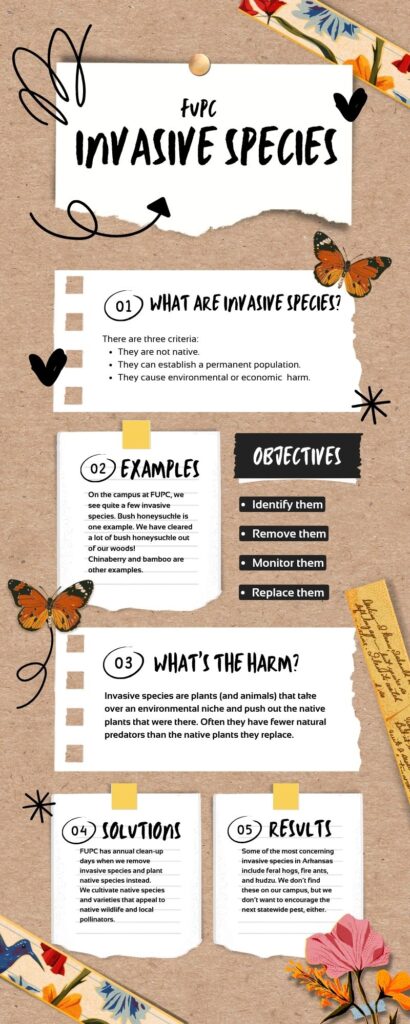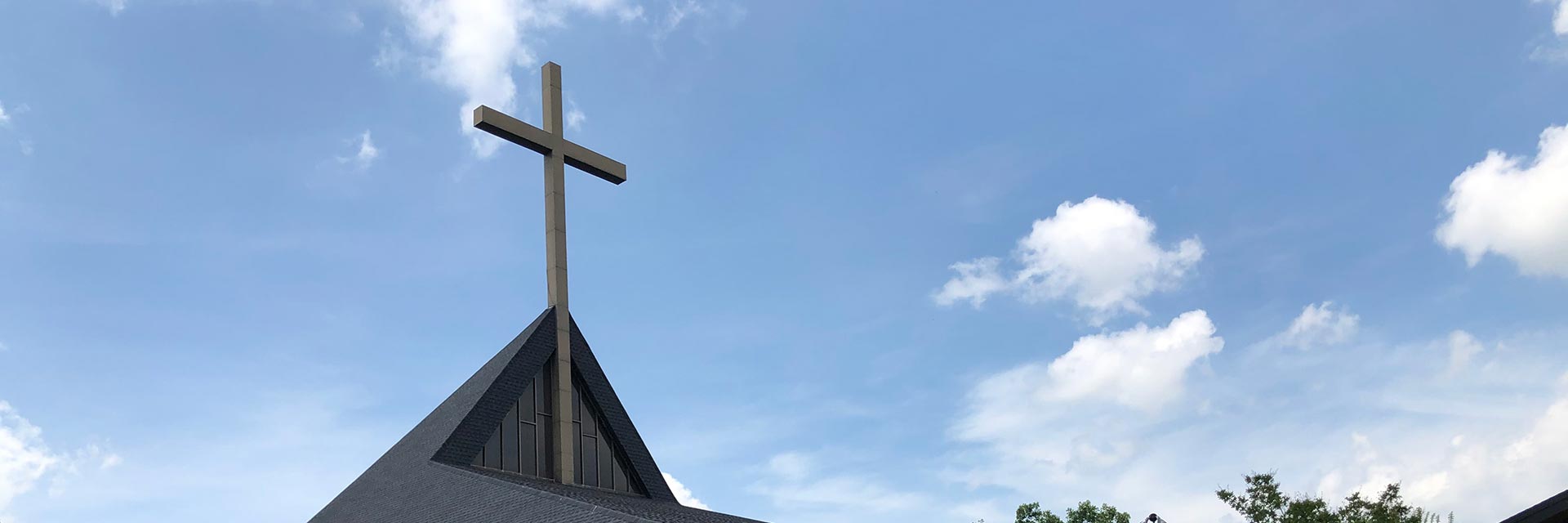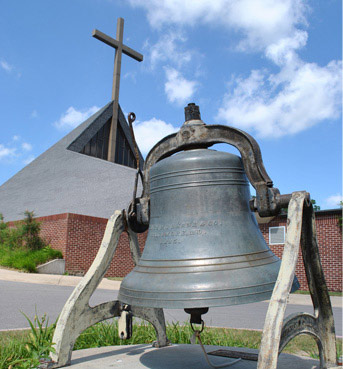Invasive species of plants and animals cause as much as $120 billion in damage in the United States each year.

Here at FUPC, we work to keep invasive species from establishing themselves on our campus. We plant native species that support the natural environment instead.
Invasive plants, like silent saboteurs, creep into ecosystems, disrupting the delicate balance and causing a multitude of problems. Unlike harmless visitors, these non-native species lack natural predators and outcompete native plants for resources, light, and space. This unchecked growth leads to a domino effect, impacting everything from wildlife habitats to human economies.
The reasons for concern are numerous and far-reaching. Invasive plants displace native flora, diminishing biodiversity and creating monocultures – landscapes dominated by a single species. This lack of diversity weakens the ecosystem’s resilience to disease, pests, and climate change. For example, kudzu, an invasive vine from Asia, smothers native trees in the southeastern US, impacting food sources and nesting sites for countless animals.
These invaders can also alter the physical structure of habitats. Plants like phragmites, a tall reed native to Eurasia, displace native wetland plants, changing water flow and sediment deposition, ultimately impacting fish populations and the overall health of the aquatic ecosystem.
Invasive plants can also disrupt natural fire systems. Many non-native species are fast-growing and flammable, contributing to hotter, more frequent wildfires that devastate native species and damage ecosystems. For instance, cheatgrass, an invasive from Eurasia, has transformed vast swathes of western US rangelands into fire-prone landscapes, impacting grazing and biodiversity.
The economic impact of invasive plants is also significant. They cost the US economy an estimated $120 billion annually through lost agricultural productivity, increased infrastructure maintenance, and reduced recreational opportunities. For example, invasive aquatic plants clog waterways, hindering navigation and impacting tourism.
Finally, invasive plants can pose health risks. Some species, like poison hemlock, are toxic to humans and animals, while others harbor allergens or pathogens.
Addressing the invasive plant crisis requires a multi-pronged approach. Early detection and rapid response are crucial, involving public education, citizen science initiatives, and swift eradication efforts. Long-term control strategies include biological control (introducing natural enemies), mechanical removal, and controlled burns. Additionally, responsible landscaping practices and avoiding the introduction of new non-native species are essential preventive measures.
Protecting our ecosystems requires vigilance against silent invaders. By understanding the threats posed by invasive plants and taking proactive action, we can safeguard the ecological balance and ensure the well-being of our planet for generations to come.




